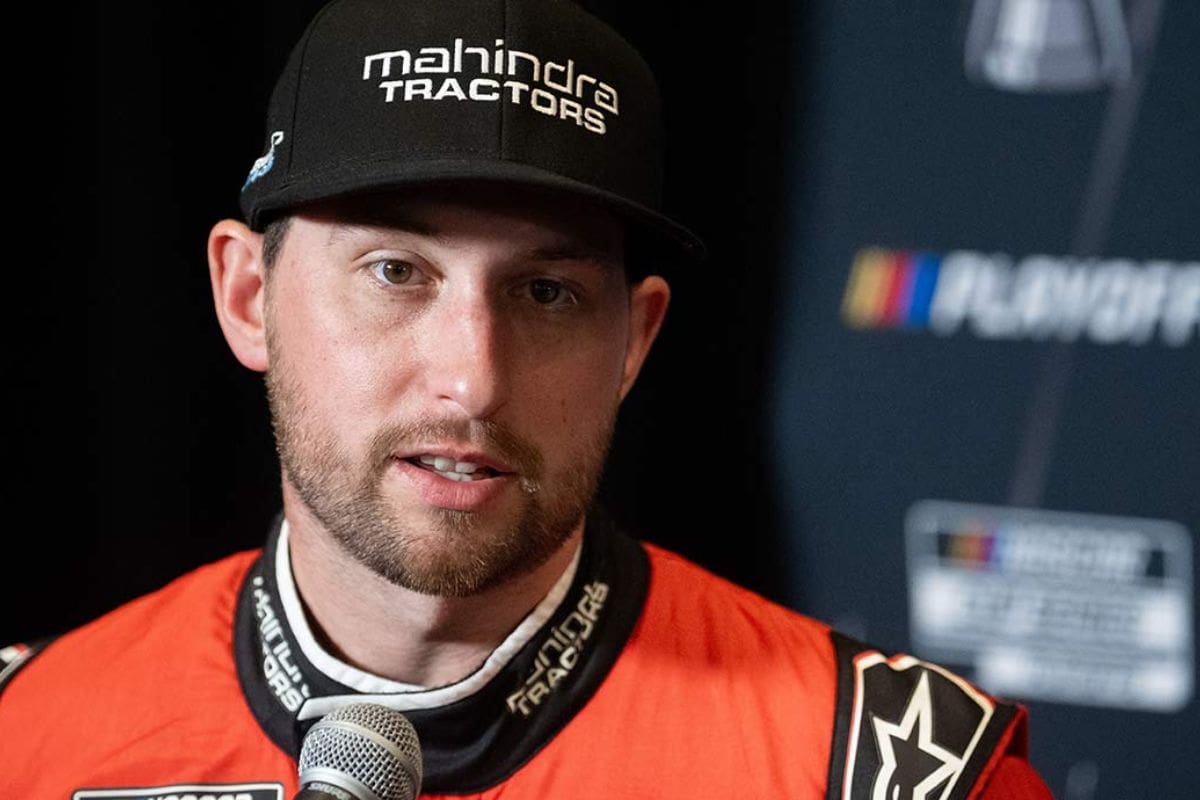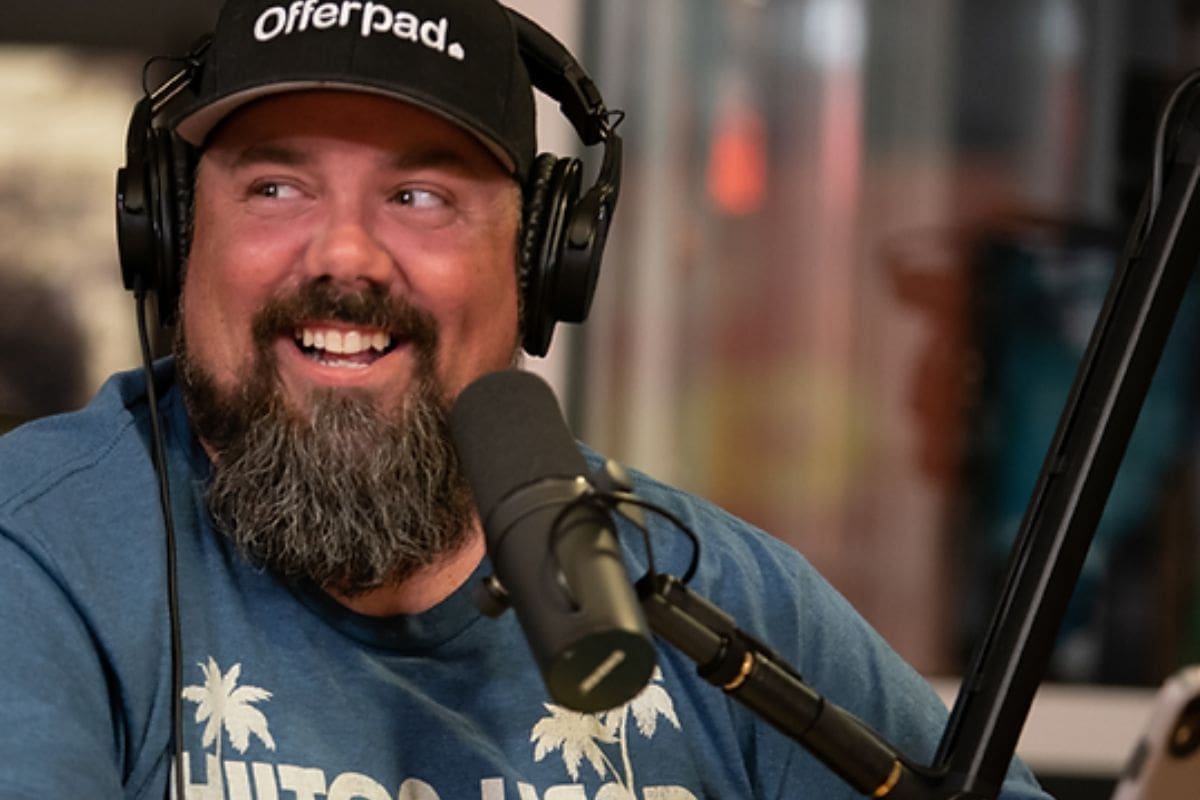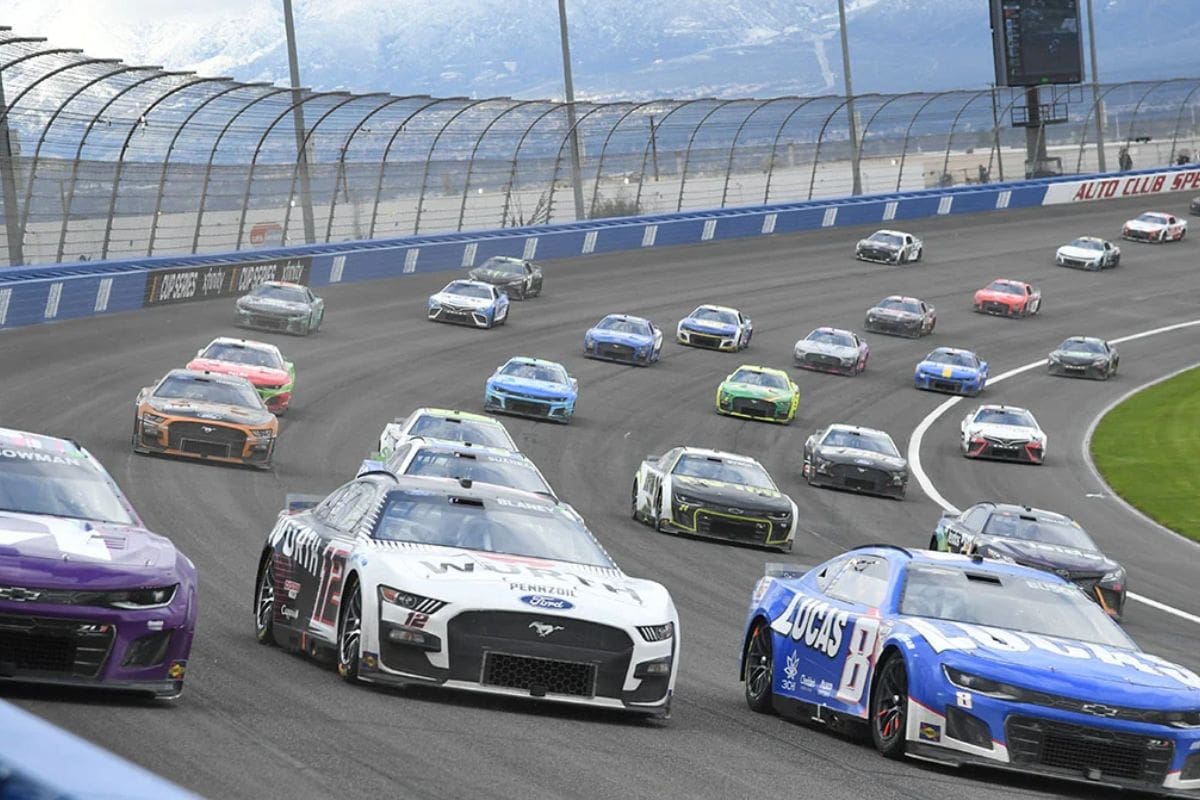Tony Stewart’s Final Playoff Push Sabotaged: Tony Stewart‘s aspirations for a victorious playoff run have been greatly undermined by the recent crash of Chase Briscoe in the Quaker State 400, raising critical questions about the team’s operational dynamics. Insiders suggest that a lack of situational awareness, compounded by spotter negligence, played a crucial role in this setback. This incident not only casts a shadow over Stewart-Haas Racing’s tactical integrity but also highlights potential systemic vulnerabilities that could hinder their championship ambitions.
Key Highlights
- Briscoe’s crash during the Quaker State 400 was exacerbated by spotter negligence, leading to critical communication failures.
- Larson’s crash triggered a chain reaction, revealing systemic issues within Stewart-Haas Racing that compromised race strategy.
- The lack of situational awareness among drivers contributed to the chaos that unfolded after the crash, impacting team morale.
- Increased scrutiny on spotters highlights the need for improved training and communication strategies to prevent future incidents.
- The incident has raised concerns about SHR’s competitiveness and playoff aspirations as the season nears its conclusion.
Chase Briscoe’s Disappointing Day in Atlanta
Chase Briscoe’s hopes for a standout performance in Atlanta quickly unraveled as he encountered a series of unforeseen challenges during the Quaker State 400. Initially optimistic, the driver of the Stewart-Haas Racing team found himself grappling with a multitude of issues that not only hindered his race but also raised questions about the team’s overall competitiveness.
As Briscoe navigated the track, the palpable tension within the SHR camp was evident; employees were aware that this could be their final opportunity for glory as the season winds down.
The turning point of Briscoe’s race came unexpectedly during lap 56 when Kyle Larson‘s loss of control initiated a cascade of problems for several teams. While Larson’s incident was a crucial moment, it became apparent that the challenges Briscoe faced extended beyond mere misfortune.
NASCAR insiders have pointed out that SHR’s struggles may stem from deeper, systemic issues within the organization, reflecting broader concerns about car handling and performance consistency.
Briscoe’s disappointment was compounded by the realization that the team’s path might be at a significant crossroads. With Tony Stewart’s leadership facing scrutiny, the race in Atlanta served as a glaring reminder of the shifting dynamics within the team.
Impact of Kyle Larson’s Crash
Kyle Larson’s crash during the Quaker State 400 resulted in immediate chaos on the track and illuminated the underlying vulnerabilities within Tony Stewart’s team. The incident, which unfolded in the initial stage, was representative of the precariousness that characterizes racing at Atlanta Motor Speedway, a track notorious for its fiery wrecks and the need for heightened vigilance among drivers and their spotters.
Larson’s loss of control in Turns 1 and 2 revealed not only the physical risks inherent in high-speed racing but also raised questions about the tactical preparedness of Stewart’s crew. The subsequent collision involving Chase Briscoe, who could not evade Larson’s stricken vehicle, compounded the drama and emphasized a critical failure in situational awareness. This crash was not merely a stroke of bad luck; it highlighted a broader issue of communication and risk management within the team.
Moreover, the implications of Larson’s crash extend beyond the immediate aftermath. It served as a catalyst for reevaluating the team’s approach to race-day strategy and driver support. The absence of decisive action to mitigate these risks could hinder their playoff aspirations, as the cumulative impact of such incidents can be detrimental to momentum and morale.
Analysis from the Door Bumper Clear Podcast
Regularly providing sharp insights, the September 10 episode of the ‘Door Bumper Clear’ podcast offered a significant analysis of the challenges facing Tony Stewart and his driver, Chase Briscoe. The hosts, Freddie Kraft, T.J. Majors, and Brett Griffin, dissected the intricate dynamics at play within the No. 14 crew, highlighting the aerodynamic subtleties that contributed to Briscoe’s recent misfortune.
Kraft pointed out an essential factor: “If you got offset to the right, you could get in a tricky aero spot where it would just snap.” This observation not only contextualizes Briscoe’s crash but also indicates a broader issue concerning the team’s handling under stress. The analysis continued as Kraft pointed to the potential for multiple drivers to have inflicted damage, indicating systemic vulnerabilities rather than isolated incidents.
“We saw at the last race there, if you got offset to the right, you could get in a tricky aero spot where it would just snap…And that’s what it looked like to me. He was offset about half a car to the right of the 12…it just snapped on him.” – Kraft
This layered analysis emphasizes the multifaceted nature of racing challenges, revealing that Briscoe’s incident is symptomatic of larger team dynamics that Stewart must address as the playoffs loom.
“I know Briscoe hit him hard, but there was a lot of guys that could have potentially hit him hard.” – Kraft
Criticisms of Spotter Negligence
The spotlight on Tony Stewart’s No. 14 team has intensified, particularly in view of the recent criticisms regarding spotter negligence during critical moments on the track. As the stakes rose in the playoffs, the failure of the spotter to effectively communicate essential information about impending hazards became increasingly scrutinized. This negligence not only jeopardized the safety of drivers but also potentially derailed Stewart’s championship aspirations.
Key criticisms have emerged, highlighting the severity of the situation:
- Lack of Awareness: Spotters seemed oblivious to the imminent wreck, allowing drivers to proceed at high speeds.
- Delayed Reaction: The absence of timely communication contributed to the chaos that followed Briscoe’s crash.
- Significant Missed Opportunities: Insight from the spotter could have educated both drivers and viewers about the dynamics of the accident.
- Impact on Championship Bid: Errors from the spotter may have directly influenced Stewart’s chances of securing a tertiary championship.
Brett Griffin, a notable commentator, articulated his concerns, stating, “What was odd to me…not only did they come close to him, they weren’t even lifting.” This commentary emphasizes the alarming disconnect between the spotters’ observations and the unfolding events on the track.
“What was odd to me…not only did they come close to him, they weren’t even lifting. It’s like they had no idea there was a wreck. So I don’t know what the spotters did or didn’t see…But when you have a guy at Cup level get hit that hard 5 seconds after he makes contact with a wall…there were way too many cars going way too fast by him…People were making errors.” – Griffin
The aftermath of this negligence raises questions about accountability and the crucial role that spotters play in ensuring the safety and success of their teams. With championship glory on the line, such oversights are not merely unfortunate; they are catastrophic.
The Role of Spotters and Future Implications
How can the effectiveness of spotters be recalibrated to prevent future mishaps in high-stakes races? The recent incident involving Chase Briscoe highlights the critical nature of spotter roles in NASCAR, demanding a reevaluation of existing practices.
Spotters serve as the vital “eyes in the sky,” yet their reliance on binoculars can inadvertently limit their field of vision, leading to considerable oversights during chaotic race conditions.
As emphasized by Brett Griffin’s observations, different tracks necessitate distinct spotter strategies. In tighter environments like Atlanta Motor Speedway, the tendency to focus narrowly can blind spotters to unfolding incidents further down the track. This narrow vision becomes particularly detrimental in high-pressure situations, where split-second decisions can determine race outcomes.
“In Atlanta, when we put our binoculars on, we are way tighter than we are at Daytona, Talladega.” – Griffin
Freddie Kraft’s anecdote about Bubba Wallace demonstrates the pitfalls of over-reliance on specialized aids; the inability to maintain a broader awareness can lead to critical misjudgments.
“The first race there, we had a stack-up into 3 and it just started out of my peripheral by the time it got in. We didn’t wreck, it was just late…check up harder than we needed to probably. And he’s like, ‘Man you using binoculars?’ I was like, yeah. He’s like I gotta stop. That’s what happens…you got guys racing especially at the end of a stage…you’re in your binoculars, and you’re only going to see 2 or 3 rows around you, and this guy’s wrecked a quarter mile in front of you.” – Kraft
To improve safety and performance, teams must cultivate a culture of proactive communication, encouraging spotters to balance the use of binoculars with situational awareness.
Furthermore, regular training and scenario simulations could refine spotters’ skills, ensuring they remain vigilant and responsive to dynamic racing conditions.
News in Brief: Tony Stewart’s Final Playoff Push Sabotaged
The challenges faced by Tony Stewart’s team during the Quaker State 400 highlight critical deficiencies in situational awareness and communication. The repercussions of Briscoe’s crash, exacerbated by spotter negligence, reveal systemic flaws within Stewart-Haas Racing that must be addressed. As the playoffs approach, the team’s ability to rectify these issues will be crucial for regaining competitive momentum. Failure to implement effective strategies may further jeopardize championship aspirations, necessitating immediate and thorough evaluation of team dynamics and operational protocols.
ALSO READ: Tony Stewart’s NASCAR Legacy in Turmoil: SHR Gears Up for a High-Stakes Final Act




